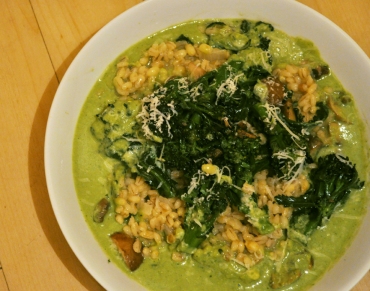
Ah, I see you’re looking at the bun xa! Or perhaps that’s bunh xao, ben xao, benh xa or other variations of western spelling I’ve come across.
Bun xa is Ella’s favourite Vietnamese dish. Noodles, basically. Rice noodles. And in our case with a topping of fried tofu and salad, with a chilli dressing. It’s a dish that depends on both ‘mouth-feel’ and your nostrils: by which I mean that it should provide a range of textures in your mouth – not just mush – and both a blast of chilli and some fresh, subtle fragrance up your nose! Yep, it’s all about balance.
We’ve been making this dish for a couple of years, attempting to recreate the delightful version found in a favourite Vietnamese place on Kingsland Road, East London. But we’ve never managed to get it quite right… until now.
The difference this time? Sourcing ingredients from a local Asian food store, rather than trusting our supermarket’s ubiquitous brands. D’oh. Seriously, getting better quality tofu, authentic rice noodles, plus soy and rice wine vinegar – in place of the usual Blue Dragon, Amoy and Cauldron brands – really made a difference. The noodles didn’t turn to slop, the tofu crisped up nicely and the seasoning was deeper and more rounded.
So, how do you make it?
First, chop some firm tofu into bite-sized (finger-sized) pieces and fry in a single layer in a wide pan in a couple of tablespoons of sunflower and sesame oil. Add a little soy sauce to the pan as well, but don’t overdo it. (Or marinate your tofu first, if you give yourself enough time). Cook the tofu gently, turning occasionally, until the tofu is golden on all sides. You can set this aside and reheat later if you need to.
While the tofu cooks, get that dressing done: chop a couple of cloves of fresh garlic, a couple of chillis (ahem, or more, y’know, perhaps) and add them to a small bowl. To the bowl then add a large splash of dark soy sauce and generous glug of rice wine vinegar. Next stir in a teaspoon of castor sugar until it dissolves. Taste. It should be fiery, sharp, fragrant and with a touch of sweetness. Remember, it won’t be this hot when it’s poured over your food. Make it as bold as you dare.
The rest is even easier. Plunge your fine rice noodles into a pan of boiling water, take off the heat and leave for around three minutes. Drain immediately then add a splash of soy sauce and a generous splash of rice wine vinegar to season them. Try and coat them well. Set aside with the lid covering them.
Quickly fry some button mushrooms, halved if they’re on the large side, then add them to the tofu pan. Shred some iceberg lettuce, finely slice two spring onions and coarsely chop some fresh coriander leaves.
Now assemble. In the bottom of your bowl place a portion of the noodles. On top of that comes the tofu and mushrooms. On top of that the ‘salad’ of lettuce, onion and herbs. Then, if you can get them in your Asian grocers, sprinkle some fried shallot flakes over the dish (we really find these add a savoury depth that’s very complementary – and yes, we’ve tried making the flakes at home but they tend to remain slightly greasy and wet whereas these are dry). Serve and let people pour the dressing over the top of the dish.
Some variations could include bean sprouts or shredded carrot in the salad. The main thing is that it is light and fresh. Chopped toasted peanuts could also be sprinkled over, as well as, or in place of, the dried shallot flakes.
Get the balance right and this is as fragrant and moreish a dish as you’ll ever have. If it was music you’d be wowed by it hitting every note on the scale. If it’s greasy, heavy or bland – and if there isn’t enough chilli, then something has gone wrong.
Practise this. It’s a tool for life. Honest.








Recipe: The perfect egg fried rice
A few days ago the Guardian newspaper offered up its advice on how to make the perfect egg fried rice. Glad to see it didn’t differ to much from our own here at ETP Towers – other than the non-addition of garlic. I think at the moment I’d also revise our version and go with the paper’s, although it’s a matter of personal taste. The newspaper’s recipe is here. X-ref with our own here.
Posted in Asia, Comment, Eggs, Recipes, Rice, Uncategorized | Leave a Comment »